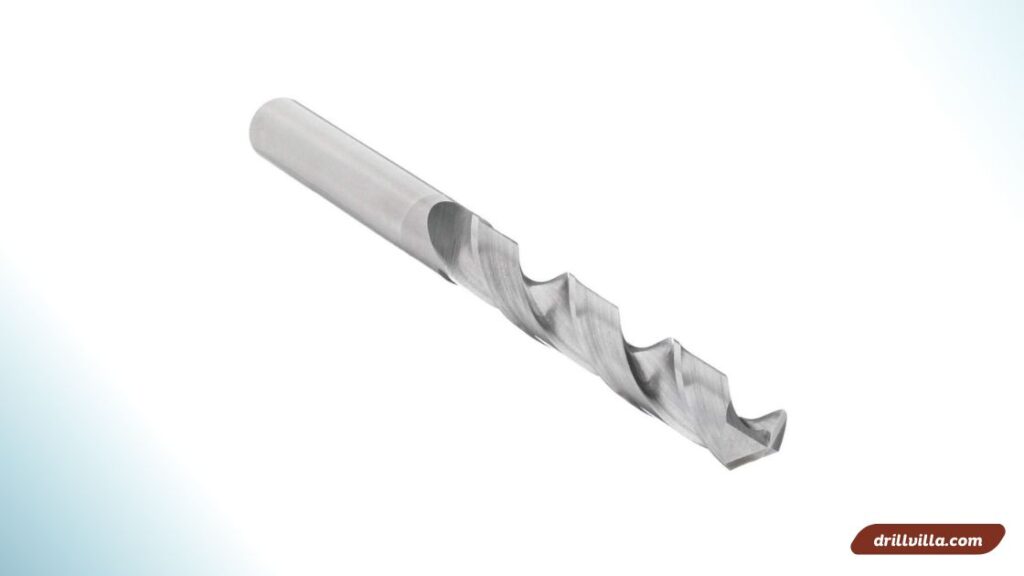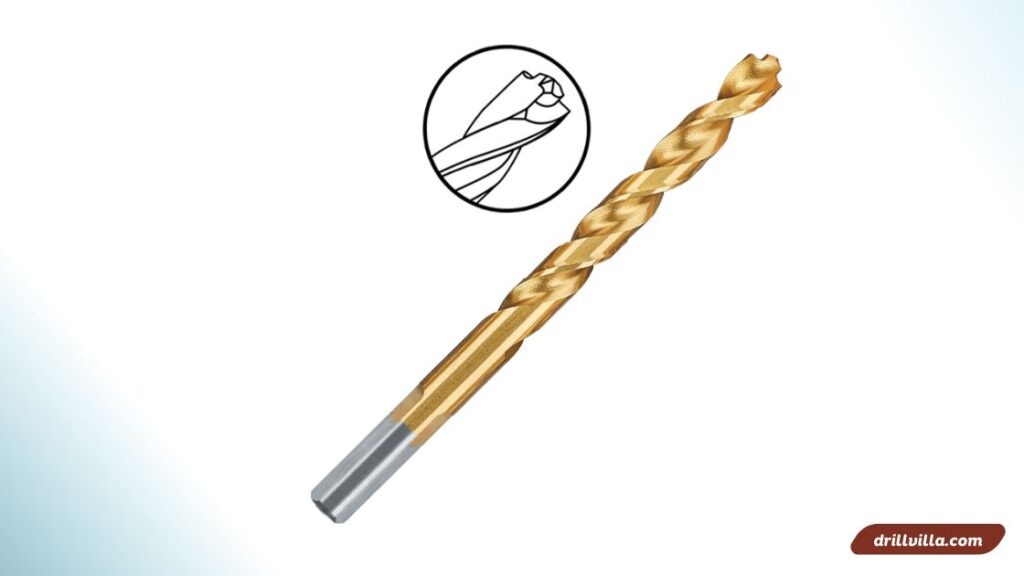I still remember the first time I saw the term “#7 drill bit” on a project sheet. I stared at it like it was written in code. I mean, I knew the sizes like 1/8″, 3/16″, and 1/4″ — those made sense. But a number 7? What the heck does that even mean?
If you’ve ever stood in the hardware aisle wondering the same thing, you’re definitely not alone. In this guide, I’ll break it all down in a way that’s super easy to follow. Whether you’re drilling pilot holes for machine screws or trying to match an old blueprint, understanding drill bit sizing can seriously save you time (and stress).
Let’s dig in — pun totally intended.
Article Summary
- What Size Is a 7 Drill Bit?
- What Kind of Drill Bit for Bowling Ball?
- Why Are Some Drill Bits Numbered Instead of Fractional?
- What Is a #7 Drill Bit Used For?
- How Does #7 Compare to Other Sizes?
- Why Not Just Use Fractional Sizes?
- Personal Story: How I Learned This the Hard Way
- Drill Bit Size Conversion Chart
- How to Find a #7 Drill Bit (It’s Not Always Easy)
- Related Drill Bit Sizing Terms to Know
- Can I Use a Substitute for a #7 Bit?
- Mistakes I’ve Made (So You Don’t Have To)
- FAQs: What Size Is a 7 Drill Bit?
- Final Thoughts: Just Keep That #7 Bit Handy
What Size Is a 7 Drill Bit?
A number 7 drill bit is 0.201 inches in diameter.
Here’s a quick cheat sheet:
| Drill Bit Number | Size (Inches) | Size (mm) |
|---|---|---|
| #7 | 0.201″ | 5.1054 mm |
This size is commonly used when you’re drilling a hole for 1/4″-20 UNC screws (a standard machine screw size).
What Kind of Drill Bit for Bowling Ball?
Drilling a bowling ball isn’t like working with wood or metal. You can’t just grab any old bit from your toolbox. Bowling balls are made from hard, dense materials like urethane or reactive resin, so they need special bits that can handle the pressure.
The safest and most effective option is a carbide-tipped or diamond-tipped drill bit. These are designed to cut through tough surfaces without overheating or chipping the ball.
- Carbide-tipped bits are durable and give a clean cut.
- Diamond grit core bits are perfect for high-performance balls with extra-tough shells.
I stick with carbide bits for most casual jobs. But if I’m working with an expensive or high-end ball, I’ll switch to a diamond bit for that extra precision.
What Size Drill Bit Should I Use?
Hole sizes vary based on your finger size and grip. But here are some general sizes to guide you:
| Hole Type | Common Drill Bit Size |
|---|---|
| Finger Holes | 3/4″ to 1-1/8″ |
| Thumb Hole | 1″ to 1-1/4″ |
| Plug Hole (repairs) | 1-3/8″ to 1-1/2″ |
I usually start with a smaller bit, then expand gradually until the fit feels just right.

Why Are Some Drill Bits Numbered Instead of Fractional?
That’s a great question. Honestly, this confused me too at first.
Here’s the deal:
There are three common systems for drill bit sizing:
- Fractional sizes (like 1/8″, 1/4″, etc.)
- Numbered sizes (like #1 through #80)
- Letter sizes (like A through Z)
So, where does #7 fit in?
Numbered drill bits are part of a system where the bits get smaller as the numbers get bigger — which is kind of backwards, right? A #1 drill bit is bigger than a #80.
They’re often used in more precise or technical work like machining, metalworking, or when using machine screws.
What Is a #7 Drill Bit Used For?
I usually reach for a #7 drill bit when I’m:
- Tapping holes for 1/4″-20 screws (especially in metal)
- Making pilot holes for bolts or fasteners in hard materials
- Following machinist charts for precise work
Here’s a simple tap drill chart I use all the time:
| Screw Size | Threads per Inch | Tap Drill Size | Closest Bit |
|---|---|---|---|
| 1/4″-20 UNC | 20 | #7 (0.201″) | ✅ Perfect Match |
So if you’re working with 1/4″-20 machine screws, a #7 drill bit is your new best friend.
How Does #7 Compare to Other Sizes?
Sometimes I don’t have the exact bit on hand, so I look for nearby sizes. But swapping bits isn’t always ideal — even tiny differences matter in tight-tolerance work.
Here’s a comparison table:
| Size Type | Size |
|---|---|
| #6 drill bit | 0.204″ |
| #7 drill bit | 0.201″ |
| #8 drill bit | 0.199″ |
| Closest fractional | 13/64″ (0.203″) |
| Closest metric | 5.1 mm |
As you can see, #7 is sandwiched between a few close contenders, but none match it perfectly. That’s why I always try to use the exact size if precision matters.
Why Not Just Use Fractional Sizes?
That’s a fair question, especially if you’re used to working in inches.
But here’s the thing:
- Numbered bits fill the gaps between fractions. For example, there’s a pretty big jump from 3/16″ (0.1875″) to 1/4″ (0.25″). A #7 (0.201″) gives you something right in the middle.
- Some charts and templates use specific number sizes, especially for metalworking and machining.
- Tapping charts often list specific numbered bits, like #7 for 1/4″-20, which is industry standard.
Personal Story: How I Learned This the Hard Way
One time I was helping a friend install a metal rack in his workshop. We had all the bolts and anchors lined up, and I figured, “Eh, 13/64″ is close enough to #7.”
Well, guess what? The bolts kept stripping out or wouldn’t bite properly. We ended up re-drilling every hole — and snapping a tap in the process. It was frustrating.
After that, I always double-check my drill bit charts and stick to the recommended size. It’s just not worth the risk when you’re working with expensive materials or tight tolerances.

Drill Bit Size Conversion Chart
Want a bigger picture of how drill bit sizes compare? Here’s a handy conversion table I keep bookmarked:
| Drill Bit Type | Size | Inches | Millimeters |
|---|---|---|---|
| #6 | 0.204″ | 0.204″ | 5.18 mm |
| #7 | 0.201″ | 0.201″ | 5.105 mm |
| #8 | 0.199″ | 0.199″ | 5.05 mm |
| 13/64″ | Fractional | 0.2031″ | 5.156 mm |
| 5.0 mm | Metric | 0.1969″ | 5.0 mm |
| 5.1 mm | Metric | 0.2008″ | 5.1 mm |
How to Find a #7 Drill Bit (It’s Not Always Easy)
Let me be honest: #7 drill bits aren’t always on display at the big box stores.
Here’s where I’ve had luck finding them:
- Online (Amazon, McMaster-Carr, Grainger) – Just type “#7 drill bit”
- Hardware stores with an industrial section
- Machinist supply stores
- Tool truck vendors like Snap-on or Matco (pricey, though)
Pro Tip: Look for jobber-length high-speed steel bits if you’re working with metal. They hold up much better.
Related Drill Bit Sizing Terms to Know
If you’re new to drill bit sizing, here are some key terms that helped me wrap my head around everything:
- Jobber length – Standard drill bit length for general use
- Tap drill – Bit used to drill a hole before tapping threads
- Clearance hole – A hole slightly larger than the screw to let it pass freely
- Pilot hole – A small starter hole to guide a screw or bit
And yes — sometimes you’ll need different bits for each of those!
Can I Use a Substitute for a #7 Bit?
Short answer: You can, but it’s risky. Here’s a quick table showing substitutes and their effects:
| Bit Size | Size (inches) | Will It Work? | Notes |
|---|---|---|---|
| 13/64″ | 0.2031″ | Maybe | Slightly oversized |
| 5.1 mm | 0.2008″ | Pretty Close | Good for casual work |
| 5 mm | 0.1969″ | Not Ideal | Too small for tapping |
I’ve used 5.1 mm in a pinch, but I always re-check the thread tightness with a bolt afterward. Sometimes you can get away with it, sometimes not
Mistakes I’ve Made (So You Don’t Have To)
- Using the wrong bit because it “looked close” — bad idea
- Not using cutting oil while drilling metal — ruined a bit fast
- Skipping pilot holes — led to crooked screws and split wood
- Assuming all #7 bits are equal — cheap ones dull quick!
FAQs: What Size Is a 7 Drill Bit?
Q: Can I use a 13/64″ bit instead of a #7?
A: You can, but it’s a bit oversized. Threads might not hold as well in metal.
Q: What tap size matches a #7 drill bit?
A: A #7 bit (0.201″) is perfect for tapping 1/4″-20 UNC threads.
Q: Is there a metric equivalent to a #7 drill bit?
A: 5.1 mm is very close (0.2008″), but not exact.
Q: Where can I buy a #7 drill bit?
A: Try online tool suppliers, machinist stores, or industrial hardware shops.
Q: Do I need special equipment to use a #7 bit?
A: Nope! Any standard drill or drill press will work. Just match your chuck size and use cutting oil if drilling metal.
If this helped you out, feel free to bookmark or share it with a buddy who’s also getting into DIY or metalwork. Drill bit sizes might seem boring, but trust me — the right one makes all the difference.
Let me know if you want a full printable drill bit size chart too — I’ve got one taped inside my garage cabinet!
Final Thoughts: Just Keep That #7 Bit Handy
Here’s what I’ve learned after years of tinkering, fixing, and failing:
- A #7 drill bit is 0.201″ in diameter.
- It’s the recommended tap drill size for 1/4″-20 machine screws.
- Use the exact size when possible — especially in metal.
- If you’re serious about your projects, invest in a full number drill bit set. It saves so much guesswork.
Honestly, once I started paying attention to details like this, my work improved a ton — fewer stripped threads, better fits, and way less frustration.
So yeah, if you’re wondering “What size is a 7 drill bit?” — now you know. And hopefully, you’ll remember it the next time you’re knee-deep in a weekend project